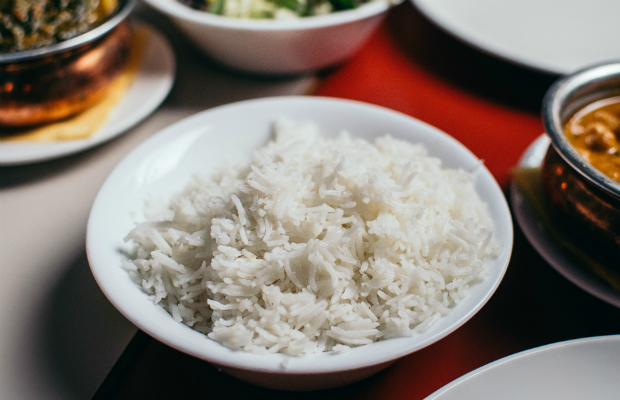Rice is one of those ubiquitous starches that’s often served with some of our favourite foods – curry, roast chicken and stew – as well as being the hero in many classics like risotto, tahdig, paella, bibimbap and biryani. Like potatoes, there are countless varieties, each with its own special starch content, size and shape. The rice you cook also depends on the way you’re going to use it. Looking for a sticky, clumpy rice? Choose a short grain variety. If you’re after firm, individual cooked grains, long grain rice is the right pick. Common varieties of long grain rice are basmati and jasmine (both have a wonderful aroma).
We’re going to take you through answers to a few of the common questions that many cooks are often faced with and explain how to make the perfect pot of rice.
Do I need to rinse the rice first?
Rinsing rice grains changes its texture when cooked. If you want perfectly separate grains, rinsing the rice in cold water first removes the thin layer of starch from the surface of each grain and helps keep the rice from sticking together. Rice softens through what’s called gelatinisation – a chemical process that only happens when heat and moisture are present, where the starch granules absorb the water and lose their crystallinity (the solid structure).
Hot water or cold water?
Always start with cold water and bring to the boil as fast as possible – then reduce the heat so the rice steams as it cooks. It’s important that the water is cold to begin with because it allows the grains to gradually absorb the water and ensures that they cook evenly. If uncooked rice is added to boiling water, the intense heat will cook the outside of the grains too quickly before the inside has a chance to soften.
Should I stir it?
The short answer is no! Once the rice grains have softened, the starch is able to more easily transfer into the water and you don’t want to agitate that. The more you stir, the more of a mushy, gloopy rice you’ll start to get. However, stirring is important with dishes like risotto, where the starch from the rice will create a necessary creamy texture.
Lid on or off?
Find a pot with a lid that fits well because the key to cooking great rice is limiting the evaporation of water. Having the lid on means that the steam inside is trapped and lowers the heat intensity – this lets the rice gradually absorb the water and swell up perfectly.
For ratios of water to rice, always follow the package instructions.

